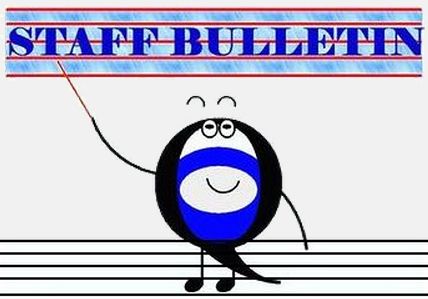 You probably thought that I was calling a Quest Teaching Staff Meeting.
You probably thought that I was calling a Quest Teaching Staff Meeting.
No, that isn’t it. The Staff that I am referring to is the – Music Staff.
If you look closely, you will see red lines behind the words “Staff Bulletin” in my picture. How many red lines did you count?
Please focus your attention on the 5 lines behind, Staff Bulletin.
These 5 lines and the 4 spaces in between them, join together to form the Music Staff on which music is written.
You can envision the music staff as the primary grid or map where the notes will be placed.
High notes will be towards the north (up) and low notes will be towards the south (down).
Scroll has returned to share a tale about the origins of the staff!
![]()
